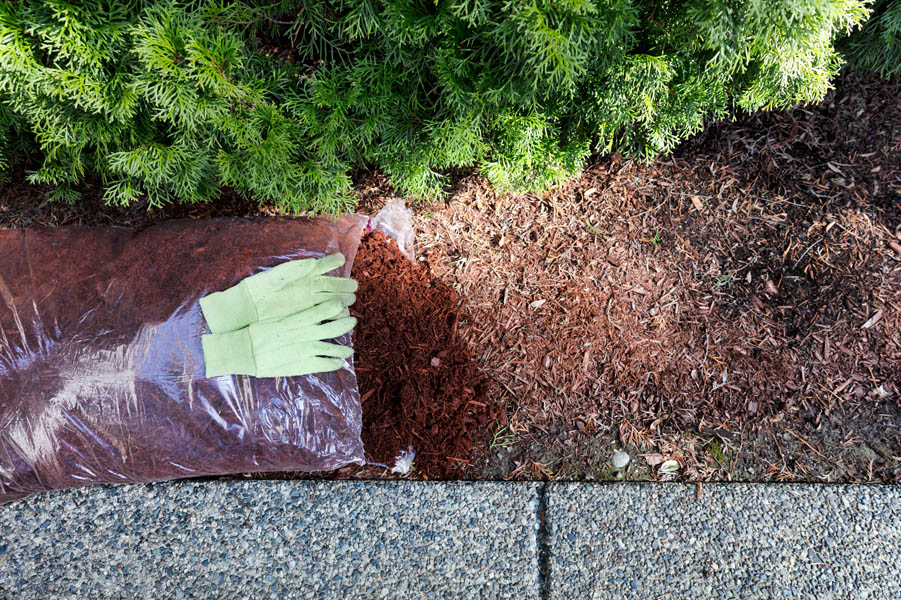When winter rolls around, it’s easy to think your garden is on pause, but it’s still a busy time for your plants. The cold temperatures, harsh winds, and unpredictable snow can take a toll on your garden’s health. Winter mulching is a simple yet powerful tool in your gardening toolkit that can help protect your plants during the chillier months.
Why Winter Mulching is Essential for Your Garden
Mulching isn’t just for spring or summer—it’s a winter must. A good layer of mulch provides several benefits that ensure your plants are protected and ready to thrive when warmer weather arrives. Here’s why winter mulching is so important:
- Mulch acts like an insulating blanket, keeping the ground around your plants at a more stable temperature.
- During winter, the soil can dry out, even in cold temperatures. Mulch helps retain moisture in the soil, preventing your plants from drying out during dry spells.
- Strong winter winds can strip moisture from the soil and damage plants. Mulch offers a barrier, reducing wind exposure and minimizing moisture loss.
How Winter Mulching Protects Your Plants
By applying mulch to your garden beds, you’re offering your plants a shield against the harshest aspects of winter. Here’s a closer look at how winter mulching safeguards your plants:
-
Prevents Frost Heaving:
As temperatures fluctuate, the soil expands and contracts. This can cause roots to be lifted out of the ground, a phenomenon known as frost heaving. A layer of mulch helps keep the soil at a steady temperature, reducing the risk of frost heaving and protecting plant roots.
-
Keeps Soil Healthy:
Mulch helps maintain soil structure by keeping it from compacting or eroding in the winter. It protects the soil’s ecosystem, including beneficial microorganisms and earthworms, which continue to thrive under the mulch layer.
-
Reduces Weed Growth:
While winter is typically a slow-growing season, some weeds still manage to make an appearance. Mulch suppresses weed growth by blocking sunlight, keeping your garden beds free from invasive plants.
Choosing the Right Mulch for Winter Protection
Not all mulches are created equal. When mulching for winter, it’s important to choose the right type to provide the most effective protection for your plants. Here are some great options for winter mulching:
- Wood Chips:
These are excellent for insulating plants and helping to retain moisture. They break down slowly, providing long-term protection through the winter months.
- Straw or Hay:
Straw and hay are light, breathable, and perfect for covering plant beds in the winter. They allow moisture to reach the soil while offering good insulation.
- Leaves:
If you have plenty of leaves in the fall, they can be a great, free mulch option. Shredded leaves work well to keep plants insulated and protected.
- Pine Needles:
Pine needles are another excellent mulching material for winter. They form a dense layer that offers both moisture retention and temperature regulation.
How to Apply Winter Mulch
Applying mulch correctly is key to getting the full benefits. Here’s how you can apply it effectively:
- Before mulching, remove any dead plants, leaves, or debris from your garden beds. If your soil is dry, give it a good watering to help the mulch lock in moisture.
- Spread mulch around your plants, applying a layer about 3 to 4 inches deep. Be sure to leave some space around the plant stems to prevent rot.
- As the winter progresses, your mulch layer may settle or decompose. Add more mulch as needed to maintain a consistent layer throughout the cold months.
Conclusion
Winter may be the time when your garden goes into hibernation, but with a good layer of mulch, you can ensure your plants remain safe, healthy, and ready to bloom when the warmer weather returns.
By taking a little extra care now, you’ll be rewarded with a thriving garden next spring. So grab your mulch, and give your plants the winter protection they deserve.



